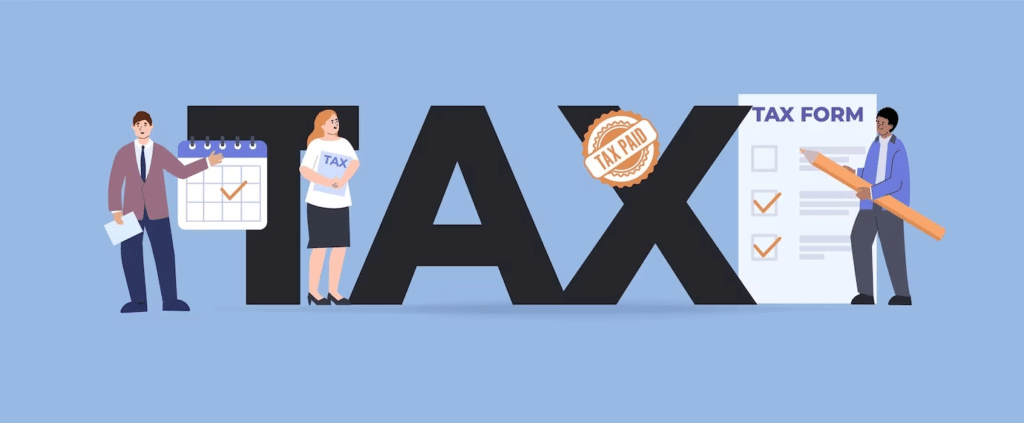Income earned in fiscal year 2022-23 must be reported by July 31. It is advisable for taxpayers, particularly stock market participants and traders, to calculate their tax liabilities and submit their returns as soon as possible to avoid a last-minute rush.
It is important for stock market investors to know that equity share gains are taxed in different ways, such as Short-Term Capital Gains (STCG), Long-Term Capital Gains (LTCG), dividend taxation, Securities Transaction Tax (STT), intraday in cash segment, and futures and options (F&O).

How equity share gains are taxed?
Investing in or selling shares generates capital gains or business income. Business income from intraday trading is taxed under the heading of “Business Income” while capital gains from long or short term investments are taxed under the heading of “Capital Gains”.
Your capital assets are classified either as short-term or long-term depending on how long you have held them. The buyer of listed equity shares who sells them within 12 months has either short-term capital gains (STCG) or short-term capital losses (STCL). The tax rate on short-term capital gains under Section 111A is 15% regardless of your tax bracket, plus surcharges and cess if applicable.
Long term capital gains (LTCGs) and losses (LTCLs) are consequences of selling listed stock shares after 12 months of acquisition. A seller earning a long-term capital gain exceeding Rs. 1 lakh on the sale of equity shares or equity-oriented mutual fund units will be taxed at 10% plus any applicable cess, without indexation.
Profits from intraday trading are taxed as business income rather than capital gains; earnings are added to your net income and taxed at the slab rate. Therefore, income tax will be levied on speculative and non-speculative business income based on the individual’s slab rate.

In India, Securities Transaction Tax (STT) applies to the acquisition or sale of securities listed on Indian stock exchanges. Income tax can be claimed on STT if the amount paid is recognized as a business expense and the share income is classified as “Profits/Gains from Business and Profession” under Section 36 of the Income Tax Act.
How to calculate STCG and LTCG along with your salary ?
The following example shows how salaried individuals can calculate income tax on short-term capital gains (STCG) and long-term capital gains (LTCG).
After two years, you would have made a net gain of Rs 13 lakh if you had invested Rs 10 lakh in a stock today and had an LTCG of Rs 3 lakh. Equity shares and equity mutual funds (MFs) are exempt from income tax if they are sold after being held for one year or more. You now have Rs 2 lakh of LTCG after exemption. Taxes on long-term capital gains at 10% will now amount to Rs 20,000.
But the story isn’t over yet. Here we’ll use tax harvesting to lower the taxable amount. Assume your total cost of shares has risen to Rs 11 lakh in one year, whereas the price at which you bought the shares was Rs 10 lakh. There is a gain of Rs 1 lakh here, but after the LTCG tax exemption of Rs 1 lakh, the tax you will pay is zero. If your target is to reach Rs 13 lakh in 2 years, then you will have to sell your entire stock and buy immediately in order to reach this target. There will be no change to your demat account, only a new cost price of Rs 11 lakh due to the tax harvesting rule.

After one year from this timeframe, let’s assume you’ve achieved your target of Rs 13 lakh. In 2 years, your new cost price has increased to Rs 11 lakh, and your net profit has increased to Rs 2 lakh. After subtracting the exempt amount of Rs 1 lakh from the LTCG gain, your net gain is Rs 1 lakh. Therefore, you will have to pay tax of Rs 10,000 at a rate of 10% if you use the tax harvesting approach. Individuals living in India have a basic exemption limit of Rs 2.5 lakh that lowers their capital gains taxes. The basic exemption ceiling of Rs 2.5 lakh may be adjusted against LTCG of Rs 3 lakh, hence allowing you to reduce income tax. Now your LTCG is Rs 50,000, which means you will only need to pay Rs 5000 in taxes at a 10% rate.
Investing Rs 10 lakh in a stock today and making an STCG of Rs 3 lakh after 1 year would give you a net gain of Rs 13 lakh. Short-term capital gains are taxed at a rate of 15% on Rs 45,000 of gains. The net taxable STCG is therefore Rs 50,000 after income tax is adjusted against the basic exemption threshold of Rs 2.5 lakh, resulting in a taxable amount of Rs 7,500 at 15%. It is important to remember that the ITR Forms ITR-2 and ITR-3 are used by salaried taxpayers to declare income from capital gains. It has been stated that income generated by the sale or transfer of unlisted shares will be taxed as “Capital Gains” regardless of how long the shares have been held. In the case of dividend income, the tax rate is 10%, and the shareholder is required to deduct TDS if he or she receives more than Rs. 5,000 in dividends.
The Income Tax Act specifies that any transactions involving futures and options are non-speculative and are taxable as business income. A trader is required to undergo a tax audit if his total turnover over the course of a fiscal year exceeds Rs 10 crore, according to Section 44AB.



